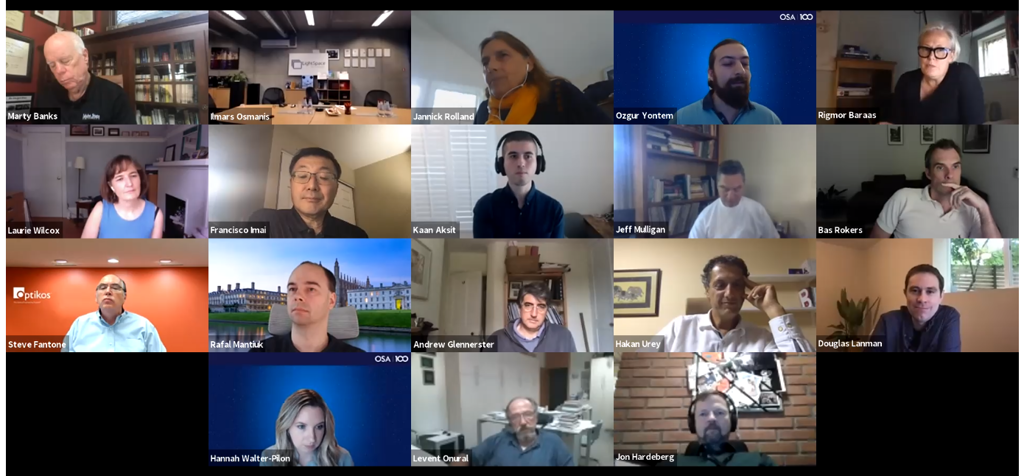Virtual Reality Headsets that Maximize Visual Performance
Suzanne Ffolkes, OSA Chief Communications Officer
Critical improvements for the next generation of displays and virtual reality (VR) headsets sparked lively discussions during the all-virtual OSA Incubator on Visual Perception in AR/VR on Thursday, 24 September.
Keynote speakers addressed the impact of vergence-accommodation conflict (VAC) in the display world in maximizing visual performance. VAC occurs when the brain receives mismatching cues between the distance of a virtual 3D object (vergence), and the focusing distance (accommodation) required for the eyes to focus on that object.

Caption: Participants of the all-virtual OSA Incubator on Visual Perception in AR/VR tune into day 3 of the Incubator
Credit: Hannah Walter-Pilon, OSA Director, New Business Development, Science Programming
Martin Banks, Professor of Optometry, Vision Science, Neuroscience, & Psychology at University of California, Berkeley, USA said recent findings show that accommodation is quite accurate for the display community “using vergence as an indicator of where to put the optical distance of the target.”
In his presentation, Douglas Lanman, director of Display Systems Research at Facebook Reality Labs Research, described improvements to the accommodation and convergence capabilities of virtual reality hardware.
He noted that displays 40 years ago are not much different from displays today in terms of the experience for the user. Over the next ten years, he suggested, the next plausible path is not screens in the livingroom, but a headset creating a larger volume that could be manipulated with your hands.
Current virtual reality headsets, he said, do not have an accurate combination of convergence and accommodation to accurately depict depth for the human visual system. The question is do we need to solve this combined problem to deliver compelling virtual reality systems?
Lanman described Facebook Reality Lab Research’s Half Dome program and specifically the Half-Dome 3 prototype, a small design with a much wider field of view than existing VR hardware and a variable focus capability with no moving parts. This was achieved using a stack of liquid crystal lens layers.
Lanman’s team built an electronic varifocal headset leveraging the latest optics technologies. There will be many more emerging technologies in the pipeline with some accommodation solution, he said, but in order to make virtual reality useful and acceptable to a wide range of users, it will have to be no heavier than ordinary glasses. Facebook Reality Labs Research most recent work includes a high-resolution VR system with holographic optical elements, a pathway to developing a system in the form of eyeglasses.
